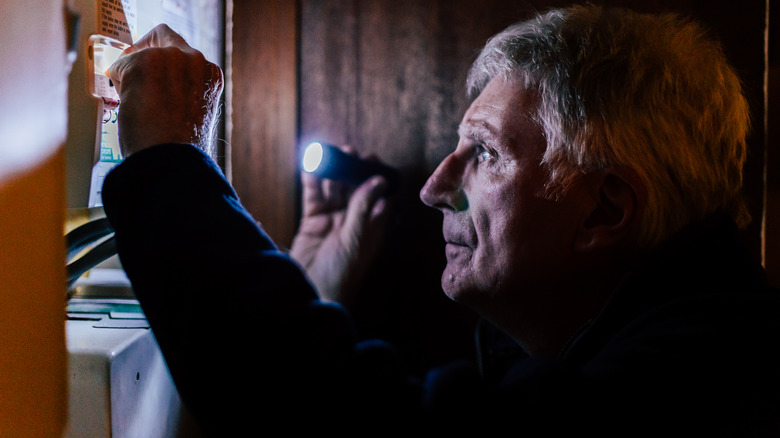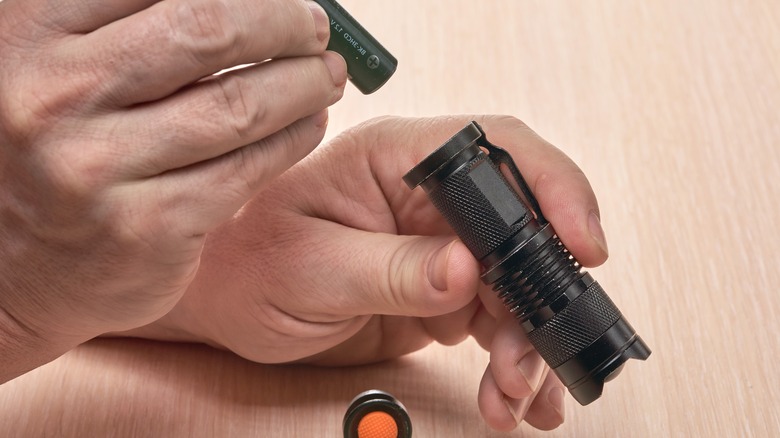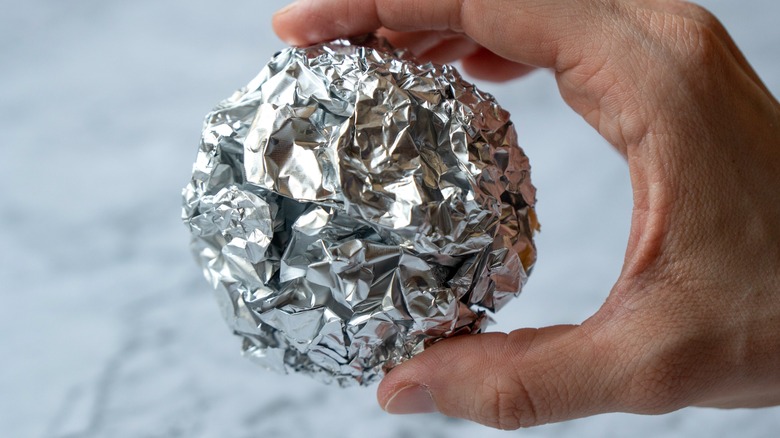The Aluminum Foil Hack You'll Want To Know In Case Of A Power Outage
Picture it; it's late, and suddenly, your power goes out, surrounding you in darkness. You feel your way to a flashlight, stumbling and bumping into furniture as you search. When you turn on the flashlight, it flickers on but doesn't stay lit for long despite the two batteries inside. Meanwhile, you remain in a power outage with no light source. What to do next? The answer may lie in your kitchen. It turns out a bit of aluminum foil could fix that flickering flashlight in a pinch.
Power outages occur for several reasons: storms, fallen trees, grid overload, and even your friendly neighborhood squirrels. Keeping aluminum foil on hand can help the next time you deal with unexpected power loss and a faulty flashlight. The thin metal acts as a conductor capable of passing a current from one point to another. It's also a quick fix for spotty Wi-Fi, too.
Fix your faulty flashlight with aluminum foil
Luckily, this handy trick is easy to pull off, even when light is limited during a power outage. You'll need a flashlight, appropriately sized batteries, and a roll of aluminum foil. First, tear a small sheet of foil. The piece should be the same size as the flashlight base. Though you will need to adjust the size, you can skip the scissors, as aluminum is easy to tear — and cutting in the dark is dangerous.
Begin with your flashlight turned off. Then, open the flashlight to access the battery compartment. Next, fold the aluminum several times. It should be thick enough to sit between the battery and the contact spring at the end of the flashlight. A foil ball will also work. Reattach the bottom of the flashlight with the foil in place. Turn the flashlight on to see if the light has stopped flickering. Adjust the foil as needed. The goal is to have a tight connection between the power source, foil, and spring. This will ensure a steady stream of light.
The secret to aluminum's power
Aluminum is a metal conductor. Conductors carry an electric current from one point to another. The contact spring and battery ends are also conductors. When you place aluminum foil between the two, it eliminates any gaps. As a result, the current flows from the batteries through the foil and to the spring. This new flow will be continuous, thus solving flickering problems.
If your issue is a shortage of batteries, aluminum foil can also take the place of a single battery. The conductive current will run through the foil just as it does when you have two batteries. However, you'll want to make the foil piece larger than if you had both batteries. Try to match the size of the battery you do have. This method won't be as bright as two batteries but can provide much-needed light in an emergency, such as during an unexpected power outage. However, the best way to have light in an emergency is to build a preparedness kit.


